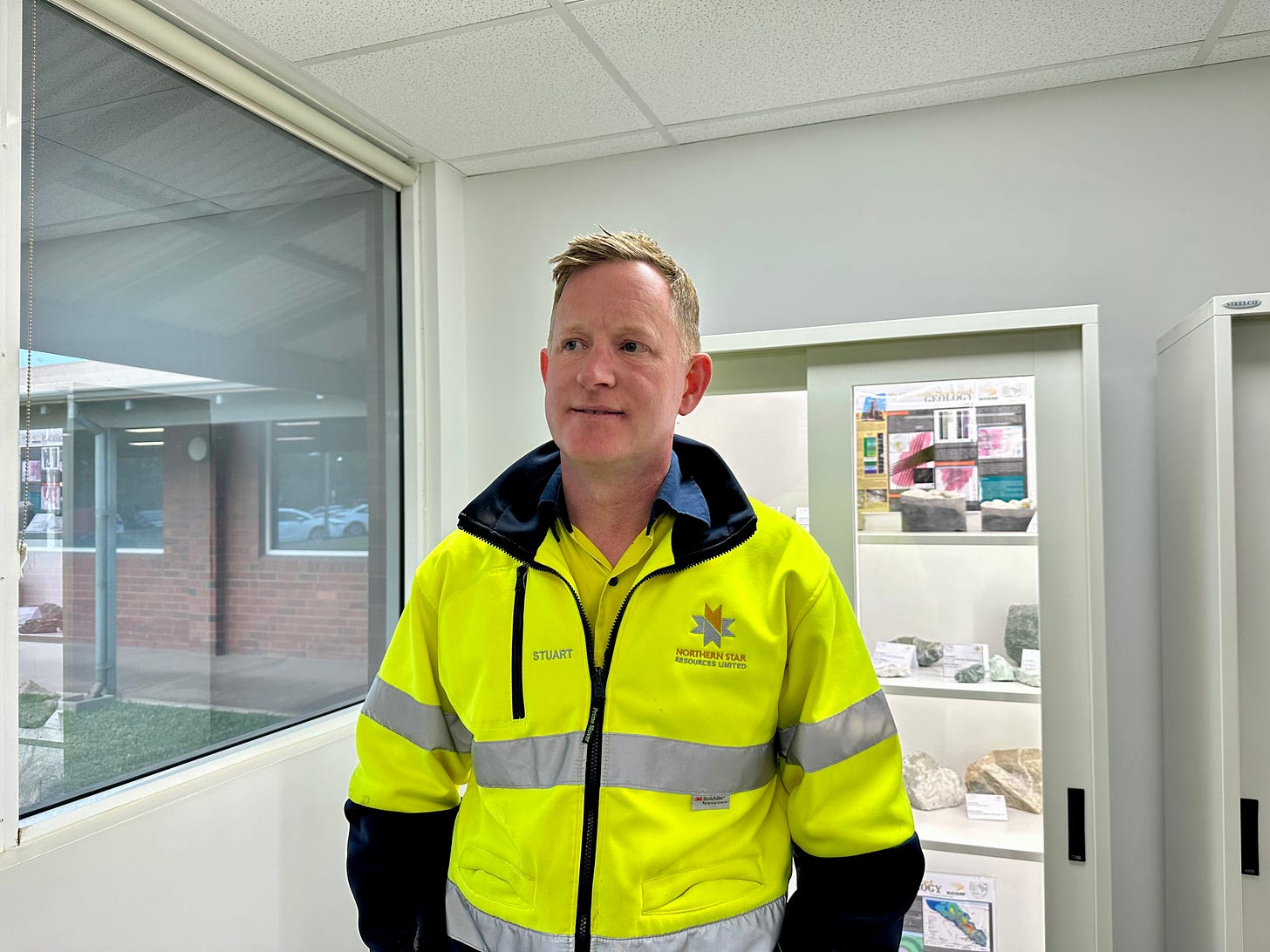Northern Star’s KCGM on Track to Become Australia’s Largest Gold Mine
One of Australia’s largest resources projects progressing on time and on budget
Northern Star Resources (ASX: NST) is on the home stretch of the three-year, A$1.5 billion expansion of its flagship KCGM asset in Kalgoorlie, Western Australia.
The expansion of the Fimiston mill from 13 million tonnes per annum to 27Mtpa was approved in June 2023.
The project has a post-tax internal rate of return of 26% and a payback period of 3.3 years, using a gold price of A$3500 an ounce, around A$1600/oz below spot.
In the two years to June 30, 2025, Northern Star has spent A$900 million, or 59%, of the capital costs, with A$530-550 million guided to be spent this financial year.
While the project remains on time and on budget, Northern Star will spend a further A$315-370 million on “operational readiness” projects, including tailings dams, a thermal power plant, accommodation facility and consumables, and A$500-550 million on development to enable future high-grade ore feed for the expanded facility.
Northern Star hosted around 70 investors, analysts and journalists to KCGM on Sunday and was keen to show off the progress of the mill expansion.
During the trip, managing director Stuart Tonkin emphasised how close the project was to completion with commissioning to kick off in mid-2027.
“This project represents decades and decades and decades of value creation,” he said.
Step change
Tonkin described the 2025 financial year as a tough one at KCGM, with full-year production of 419,000 ounces of gold.
Guidance for this financial year is 550,000-600,000.
Tonkin said the commissioning of the mill expansion would represent a step change for the asset.
From FY27, production will rise to 750,000-800,000 and to 800,000-850,000oz in FY28 and 850,000-900,000oz in FY29, making it the largest gold mine in Australia and a top five global operation.
Tonkin sees a pathway to 1 million ounces of production per annum.
“The facility itself absolutely has the throughput,” he said.
KCGM has a resource base of 39Moz, which includes a large stockpile of 144 million tonnes at 0.6 grams per tonne gold for 2.9Moz of gold.
Ore is sourced from the Super Pit, a pit that is roughly 3.5km long, 1.5km wide and over 600m deep, and a growing network of underground mines.
“KCGM itself, as we know it, is the Super Pit, it's the underground growth and the stockpile is sitting there,” Tonkin said.
In the broader region, Tonkin said the plant expansion could enable the Red Hill and Hercules deposits to come into the plan.
“This is just the start for the Super Pit, or KCGM as it's known, and then obviously it's about the Fimiston plant. How good can it be?”
Hemi
Earlier this year, Northern Star wrapped up the A$6 billion scrip takeover of De Grey Mining, giving it ownership of the 13.6Moz Hemi deposit in WA’s Pilbara region.
De Grey’s 2023 definitive feasibility study for Hemi outlined a A$1.3 billion open pit operation to produce an average 553,000ozpa over the first five years and 530,000ozpa over the first 10 years at all-in sustaining costs of A$1200-1300/oz.
At a gold price of A$2700/oz, the DFS returned a post-tax net present value of A$2.9 billion and IRR of 36%.
Tonkin said the company was awaiting government approvals for the development, likely by early 2026.
“We know that the DFS numbers published are a bit dated, so it's important that when approvals come through in time, we'll refresh that pricing and update the market accordingly,” he said.
Northern Star has allocated A$140-150 million of capital spend on the project this financial year.
Tonkin said Hemi would likely start development just as the KCGM mill expansion was completed.




